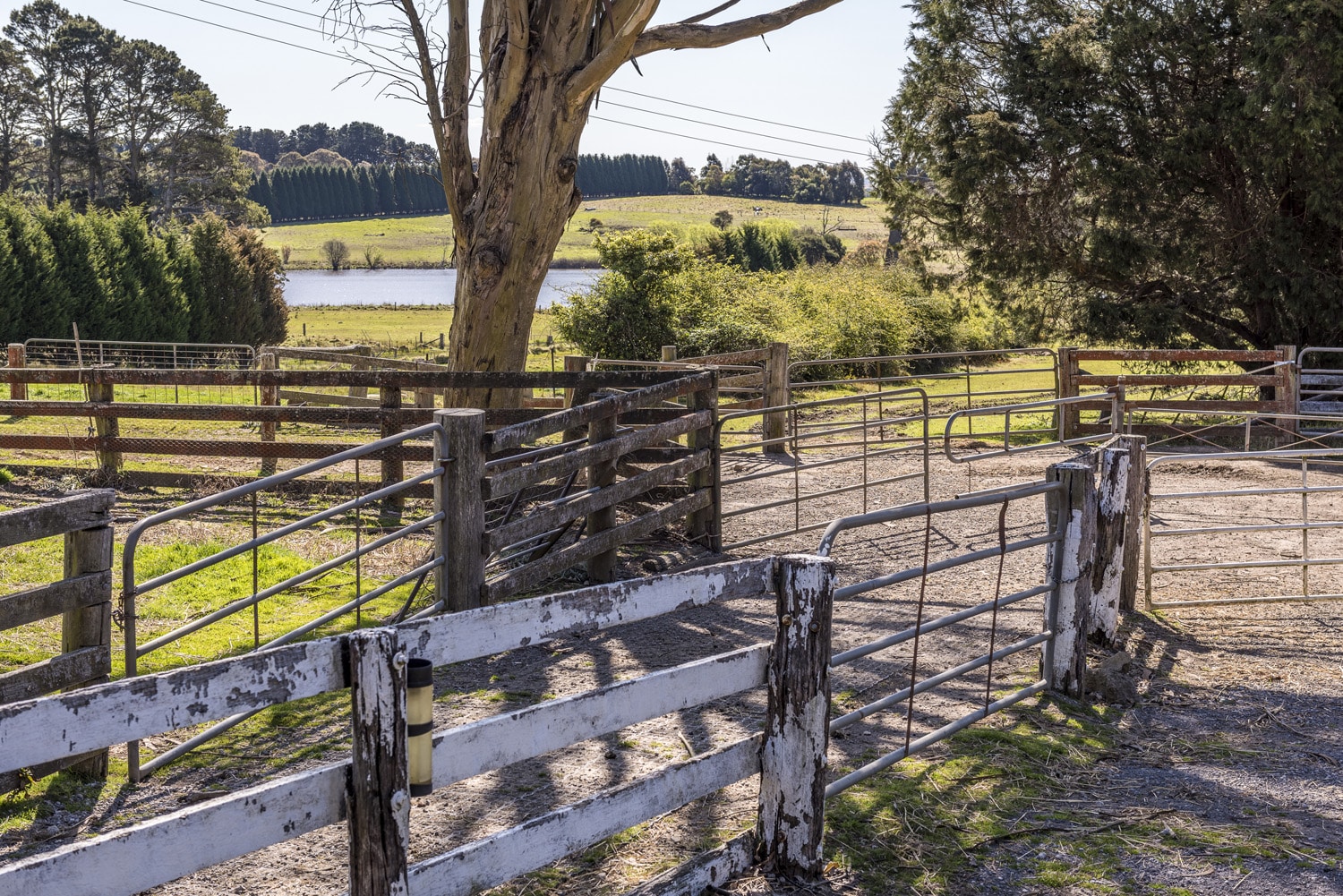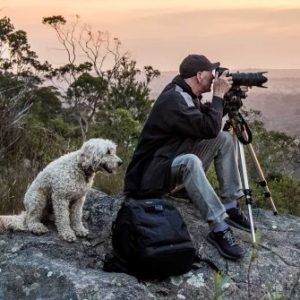Storybook Alpacas
The Southern Highlands has been at the forefront of Australia’s alpaca industry since it was established in 1988, just 34 years ago.
The pioneers of that industry include Janie Forrest, sister of Andrew “Twiggy” Forrest. Today, the Williams family is carrying the torch and they believe the future is looking bright as they manage over 1,000 alpacas on the Coolaroo property near Berrima.
Mick Williams smiles wryly as he says their business was named StoryBook Alpacas because it was his wife’s dream to breed the animals and the name “recognised the romance of Karen’s fairy tale. It was also tongue in cheek, because I thought it was a fairy tale that we’d ever make any money out of it.”
It is no surprise when you meet him to learn that Mick grew up in Inverell where his family had been breeding Fine Merino sheep and Poll Hereford cattle for three generations. He studied commerce and accounting at Charles Sturt University and worked for Toyota after he graduated. His wife Karen completed an MBA at Charles Sturt University and then worked in a variety of corporate roles.
They bought their first farm in 2002, near Bargo where Karen’s family were living, and Mick thought he would follow in his family’s footsteps.
“I had a plan to grow meat sheep with a self-replacing flock and then out of the blue Karen said: ‘I don’t want sheep, I want alpacas.’ I said: ‘Let me tell you a story about alpacas. I saw my first alpacas at The Sydney Royal Easter Show in about 1989. There were just two of them in a pen in the goat and pig pavilion. I knew what they were, but I said to my grandfather: ‘Pa, what are these?’ He said: ‘Son, they’re alpacas. Steer clear of them, they will be the feral goat of the 2000s.’
“I told Karen there was no fibre industry, no meat industry and no return on investment and that only iconic, well to do people could afford to have alpacas for their tax scheme. But despite everything I put forward, she said: ‘I don’t care, that’s what I want to do. They are such interesting and beautiful animals.’ And then she told me she’d done all this research and even spoken to Janie Forrest.”
Janie Forrest was an industry leader, having taken over the administration and management of Coolaroo Alpaca Stud in 1995 and then purchasing that business in 1998.
“We’d recently bought our first car and we thought we were so good because we’d saved up and paid for it in cash,” Mick recalls. “And then we bought our first couple of alpacas – and they cost more than the car.”
It was a very steep learning curve for the Williams.





“You can’t just learn to farm alpacas,” says Mick. “You’re basically working with an animal that you have no idea how to do anything with. The plan was to generate income from our two black male alpacas through breeding and siring fees, but because they were so expensive we couldn’t afford to make any mistakes. So we bought five other alpacas, wethers and barren females, so we could learn from them. I had no problem with things like drenching and injecting, but we had to learn to get the order and processes right.”
The Williams took their business more seriously each year and, importantly, they invested in genetics
“I saw this male at the Sydney Royal Easter Show when he was nine months old. My daughter, Rubey, and I were in the Grand Parade and Janie [Forrest] gave me an alpaca to lead. I knew he was fantastic and we needed to buy him. It took five years, but we eventually bought a half share with Janie.”
In its first decade, from 2003 to 2013, the StoryBook Alpaca herd grew from two to 300.
It was at this time that Coolawarra was formed, bringing together the industry leading Coolaroo and Illawarra herds of Janie Forrest and Dr Ian Davison. The Williams started to collaborate more and more with Coolawarra and in 2016 they purchased the Coolawarra herd.
The Australian alpaca industry was rocked to its core that same year when shipping of alpacas to the lucrative United Kingdom and European markets was stopped by authorities due to the potential of a Q Fever outbreak.
“Suddenly people who had made thousands and thousands of dollars by selling their top animals to the UK and Europe couldn’t do it any more,” Rubey recalls. “It wasn’t an option.”



The Australian industry had to respond in order to survive – and so the country’s alpaca fibre industry was born. The Waratah Alpaca Fibre Co-op was formed in 2018, with Mick a founding member, to help Australians sell their alpaca fleece to the world.
“There are over 1,000 registered alpaca breeders in Australia, but most are small operators,” Rubey says. “The average herd size is 28 alpacas. We hoped that, through the co-operative, if people could see that fibre could be a genuine concern and they could sell their fibre, they would want to participate in building the industry. They would buy better males and they would breed more.
“It’s been slow, but it’s happening.”
Alpaca fleece is valued for both its softness and its strength, and the co-operative now sells $2.5 million of it each year to buyers in countries including China, Canada and New Zealand.
Importantly, Coolawarra and StoryBook Alpacas is a very diversified business.
“It has to be,” says Mick, “because even though we are running over 1,000 alpacas, that is minute compared to the merino sheep industry. We have a breeding and siring program, we sell to other breeders, we export animals and fleece to overseas markets and we have an agistment business, where we manage alpacas for domestic and overseas owners. For example, we look after over 100 animals for a client in Qatar and more than 40 for a Chinese owner.”


While Australian breeders can still not export their high quality alpacas to the UK or Europe, there is strong demand from Asian countries such as China, Korea and Indonesia.
“They are used for breeding,” Rubey says, “but we recently sold 48 alpacas to a Korean buyer who will place them on an elite resort where they will feature in wedding photos and be part of a farmyard nursery. These animals will be living in the lap of luxury!”
Coolawarra and StoryBook Alpacas are now also involved in ecotourism.
“People around the world love alpacas and recently we won a contract with Disney. A group of American tourists come to Australia for about 10 days and, from Sydney, they spend a day in The Southern Highlands. They visit Kangaroo Valley and have lunch at the café in Berrima – but a big drawcard is coming to Coolaroo to see our alpacas.”
Mick and Karen both have MBAs and have brought a disciplined corporate approach to their business.
“We run it very commercially, very much like a sheep organisation. There was no point reinventing the wheel. All our animals have electronic ear tags, so we are paperless and there is no data entry. The tags record the animal’s full history, including its weight and all the husbandry information.”




According to the Australian Alpaca Association, the Australian alpaca industry has over 200,000 registered animals and is the second largest in the world, behind only Peru. Alpacas thrive in Australia, in small and large herds, and their soft footpads cause minimal soil damage compared with other ruminants. There is currently good demand for breeding, siring, fibre and agistment services and there is potential to develop a market for alpaca meat.
“Despite their appearance, they are a very robust livestock,” says Mick, “and they are much more intelligent than sheep, so they are far easier to work with.”
So what attracts a young woman like Rubey Williams to the alpaca industry?
“I grew up around them and they’ve always been part of my life,” she says thoughtfully. “Being around them and working with them is the place I feel most comfortable. The primary attraction is the animals themselves, but the social side is great. Alpaca shows are like a family reunion, it’s such a fun atmosphere and a great environment to be part of. The lifestyle it allows you to lead is something I hold in really high regard.”
Asked if she will definitely lead the next generation for Coolawarra and StoryBook, Rubey replies enthusiastically and without hesitation: “Oh yeah! I’m knee deep in it already.”





Michael Sharp
Michael is the Gallery Manager at Michael Reid Southern Highlands. He has previously worked as a lawyer, journalist and senior practitioner in Australian corporate affairs.

Ashley Mackevicius
Ashley discovered photography at the age of 15, which proved to be a lifeline for the academically challenged son of Lithuanian migrants. He has had a long and successful career and lives in The Southern Highlands.
- xxi Pecora Dairy June 2024
- xxvii Marlie Draught Horse Stud May 2025
- xxvi India Mark February 2025
- xxv Mussett Holdings December 2024
- xxiv Louise Frith October 2024
- xxiii Dirty Jane August 2024
- xxii Melanie Waugh July 2024
- xx Emily Gordon May 2024
- xix Steve Hogwood March 2024
- xviii Julz Beresford February 2024
- xvii Snake Creek Cattle Company November 2023
- xvi Ben Waters September 2023
- xv The Reid Brothers August 2023
- xiv Elizabeth Beaumont July 2023
- xiii The Charlotte Project June 2023
- xii Buddhism in Bundanoon May 2023
- xi Honey Thief April 2023
- x David Ball February 2023
- ix Kate Vella January 2023
- viii The Truffle Couple December 2022
- vii Wombat Man November 2022
- vi Storybook Alpacas September 2022
- v Tamara Dean August 2022
- iv John Sharp July 2022
- iii Amanda Mackevicius June 2022
- ii Denise Faulkner May 2022
- i Joadja Distillery March 2022



















